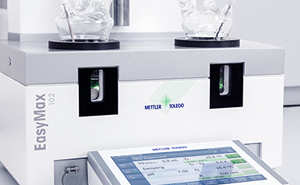What Is the Process of a Hydroformylation Reaction?
The hydroformylation reaction, also known as the oxo process, is a significant industrial process used for the synthesis of aldehydes from olefins (alkenes). The process involves the reaction of an olefin with carbon monoxide (CO) and hydrogen (H2) in the presence of a catalyst, typically a transition metal complex.
The general process of hydroformylation can be described in several steps. Firstly, the olefin substrate reacts with the catalyst to form a metal-olefin complex. This step is often reversible and governs the rate of the reaction. The catalyst used can vary, but commonly employed catalysts include those based on cobalt, rhodium, and iridium. Next, the metal-olefin complex undergoes a series of reactions, including the insertion of CO and H2 molecules. The insertion of CO forms a metal-carbonyl complex, while the insertion of H2 leads to the formation of metal-hydride complexes. These steps are crucial for the subsequent transformations. In the following step, the metal-carbonyl complex interacts with the metal-hydride complex, leading to the formation of an aldehyde product. This step involves the migration of the metal-hydride group to the carbonyl carbon, resulting in the desired aldehyde. The specific pathway and mechanism of this migration depend on the reaction conditions and the nature of the catalyst. Finally, the aldehyde product is released from the catalyst, and the catalyst returns to its original state, ready for the next cycle of the reaction. The aldehydes produced through hydroformylation are valuable intermediates used in various industries, including the production of detergents, plastics, and pharmaceuticals.
What Are the Conditions for Hydroformylation Reactions?
Hydroformylation reactions require specific conditions to achieve efficient and selective conversion of olefins into aldehydes. The conditions can vary depending on the specific reaction and desired outcomes, but the following parameters play a crucial role in hydroformylation:
Temperature: Hydroformylation reactions typically occur at elevated temperatures, typically ranging from 80 to 200 degrees Celsius. The optimal temperature depends on the specific catalyst and substrate used.
Pressure: The reaction is carried out under high-pressure conditions to ensure the efficient dissolution of carbon monoxide (CO) and hydrogen (H2) gases. Typical pressures range from several atmospheres to tens of atmospheres.
Catalyst: Catalysts are essential for promoting the hydroformylation reaction. Commonly used catalysts include transition metal complexes, such as rhodium, cobalt, and iridium complexes. The choice of catalyst depends on the specific substrate and desired reaction selectivity.
Solvent: Hydroformylation reactions are typically performed in a solvent to facilitate the mixing of reactants and maintain a homogeneous reaction mixture. Common solvents include polar organic solvents like alcohols or ethers.
CO and H2 Ratio: The ratio of carbon monoxide to hydrogen is an essential factor in controlling the selectivity of the hydroformylation reaction. Varying the CO:H2 ratio allows for the control of the linear-to-branched aldehyde ratio in the product.
Ligands: Ligands are often used in conjunction with the catalyst to modify its reactivity and selectivity. Ligands can influence the regioselectivity, stereochemistry, and stability of the catalyst, thereby affecting the reaction outcome.
Reaction Time: The reaction time required for hydroformylation can vary depending on the specific substrate and reaction conditions. Reactions typically proceed over several hours to achieve the desired conversion and selectivity.
It's important to note that the specific conditions may vary depending on the reaction system, catalyst, substrate, and desired product. Optimization of these conditions is crucial for achieving high yields and desired selectivity in hydroformylation reactions.
What Catalysts Are Used for Hydroformylation?
The choice of catalyst for hydroformylations is critical in determining the reaction's efficiency, selectivity, and overall success. Several catalysts are commonly used in hydroformylation reactions, including:
Rhodium-based Catalysts: Rhodium catalysts are widely employed in hydroformylation due to their high activity and selectivity. Examples of rhodium catalysts include RhCl(PPh3)3 (known as Wilkinson's catalyst) and its derivatives. These catalysts exhibit excellent regioselectivity, favoring the formation of linear aldehydes.
Cobalt-based Catalysts: Cobalt catalysts are another common choice for hydroformylation reactions. Notably, Co2(CO)8, known as cobalt tetracarbonyl, is a popular cobalt catalyst. Cobalt catalysts are more cost-effective compared to rhodium catalysts, although they generally exhibit lower selectivity.
Iridium-based Catalysts: Iridium complexes have shown promising catalytic activity in hydroformylation reactions. Catalysts such as [Ir(COD)(PCy3)Cl] (COD = 1,5-cyclooctadiene, PCy3 = tricyclohexylphosphine) have been employed for efficient hydroformylation processes.
Ruthenium-based Catalysts: Ruthenium complexes have gained attention for their potential in hydroformylation reactions. Catalysts like RuHCl(CO)(PPh3)3 have exhibited good selectivity in certain hydroformylation reactions.
Nickel-based Catalysts: Nickel catalysts have been investigated for hydroformylation, particularly in niche applications. Nickel carbonyl complexes, such as Ni(CO)4, have been utilized in specific hydroformylation processes.
These catalysts can be modified by incorporating various ligands, such as phosphines, phosphites, or phosphinites, to fine-tune their reactivity and selectivity. Ligands play a crucial role in controlling the regioselectivity of the reaction and modifying the catalyst's properties. The choice of catalyst depends on factors such as the desired product, substrate, reaction conditions, and cost considerations. Optimizing the catalyst selection and reaction conditions is essential to achieve high yields, desired selectivity, and economic feasibility in hydroformylation processes.
Are Hydroformylation Reactions Exothermic?
Hydroformylation reactions are typically exothermic in nature meaning they release heat during the reaction process. The exothermicity of hydroformylation reactions can be attributed to the chemical transformations occurring, which involve the breaking and forming of chemical bonds. The exothermic nature of hydroformylation can be understood by examining the bond energies involved. The breaking of the relatively weak π bond in the olefin and the formation of stronger σ bonds in the aldehyde and the intermediate metal complexes release energy. This energy is liberated as heat, leading to an increase in the overall temperature of the reaction system.







